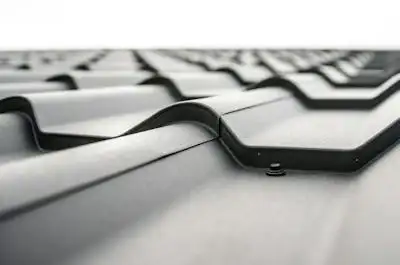Inspecting the Troops: Signs of Roof Wear and Tear
Before we dive into repairs versus replacements, let's assess your roof's battle scars. Here are some key indicators that your trusty shield might be due for an upgrade:
Shingle Shenanigans:
Missing shingles: Bald spots are a big no-no. Missing shingles expose the underlayment, inviting leaks and structural woes.
Cracked or curling shingles: Like cracked armor, these shingles can't defend against water infiltration. Curling shingles indicate age and imminent failure.
Granule loss: Those tiny bits on your shingles aren't just decoration; they protect the asphalt from UV rays. Excessive granule loss exposes the asphalt, accelerating its deterioration.
Leaks and Moisture Mayhem:
Water stains on ceilings or walls: This is a flashing red signal of leaks. Don't ignore it, as it can lead to mold and structural damage.
Sagging roof: A drooping roof is a stressed roof. It could be overloaded, waterlogged, or suffering structural issues. Time to call in reinforcements!
Moisture in the attic: Condensation is normal, but excessive moisture or standing water indicates poor ventilation or leaks.
Other Worrisome Warriors:
Age: Asphalt shingle roofs typically last 15-20 years, depending on material and climate. If yours is nearing retirement age, keep a close eye on it.
Moss and algae growth: While not always detrimental, excessive moss and algae growth can trap moisture and damage shingles.
Unexplained high energy bills: Poor roof insulation can lead to increased energy consumption for heating and cooling.
Repair or Replace? Weighing Your Options
Now that you've identified the potential weaknesses in your roof's defenses, it's time to decide on the best course of action. Repair or replace? Here's a breakdown to help you make an informed decision:
Repair:
Pros:
- Cost-effective for minor damage.
- Extends the lifespan of your existing roof.
- Quicker turnaround time.
Cons:
- May not be a long-term solution for extensive damage.
- Patchwork appearance might not be aesthetically pleasing.
- Underlying issues might remain unaddressed.
Replace:
Pros:
- Provides long-term peace of mind and protection.
- Improves energy efficiency with newer, better-insulated materials.
- Enhances the curb appeal of your home.
Cons:
- Significantly higher cost compared to repairs.
- More disruptive and time-consuming process.
- Requires careful material selection and installation.
Making the Call:
Ultimately, the decision depends on the severity and extent of the damage, your budget, and your long-term plans for the property. If you're unsure, consulting a qualified roofing professional is crucial. They can assess your roof's condition, provide accurate estimates, and guide you towards the most suitable option.
Bonus Tips for Roof Longevity:
Regular inspections: Schedule annual or biannual inspections to identify and address minor issues before they escalate.
Proper maintenance: Keep gutters clean, trim overhanging branches, and remove debris from the roof to prevent moisture buildup.
Ventilation is key: Ensure proper attic ventilation to prevent moisture buildup and mold growth.
Invest in quality materials: When replacing your roof, opt for high-quality shingles and underlayment for optimal durability and performance.
Remember, your roof is your home's first line of defense against the elements. By being proactive in its care and maintenance, you can ensure its protection for years to come. So, give your roof the TLC it deserves, and it will continue to keep you and your loved ones safe and dry for many seasons to come.
Beyond the Basics:
For further insights, here are some additional resources you might find helpful:
Asphalt Shingle Manufacturers Association: https://www.asphaltroofing.org/
National Roofing Contractors Association: https://www.nrca.net/
Energy Star Roof Products: https://www.energystar.gov/products/cool_roofs_emissivity
I hope this information helps you make informed decisions about your roof's future. Remember, a healthy roof is a happy home!

